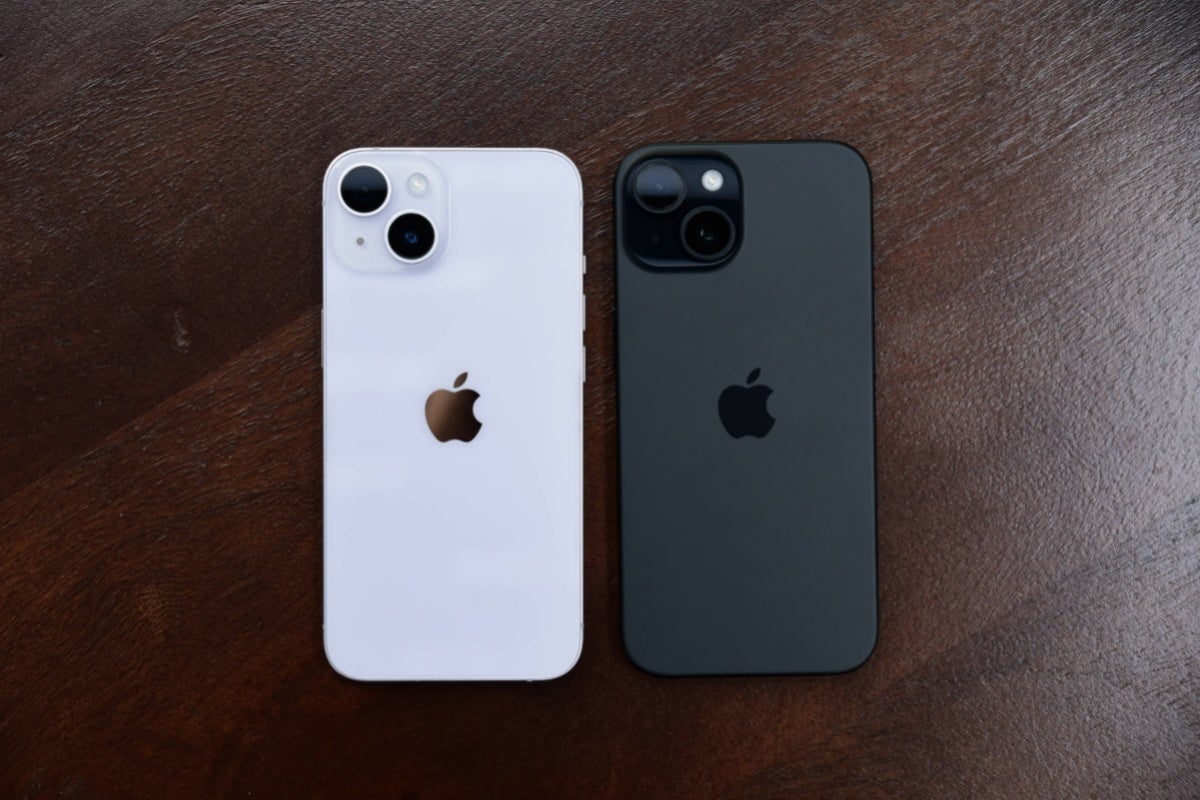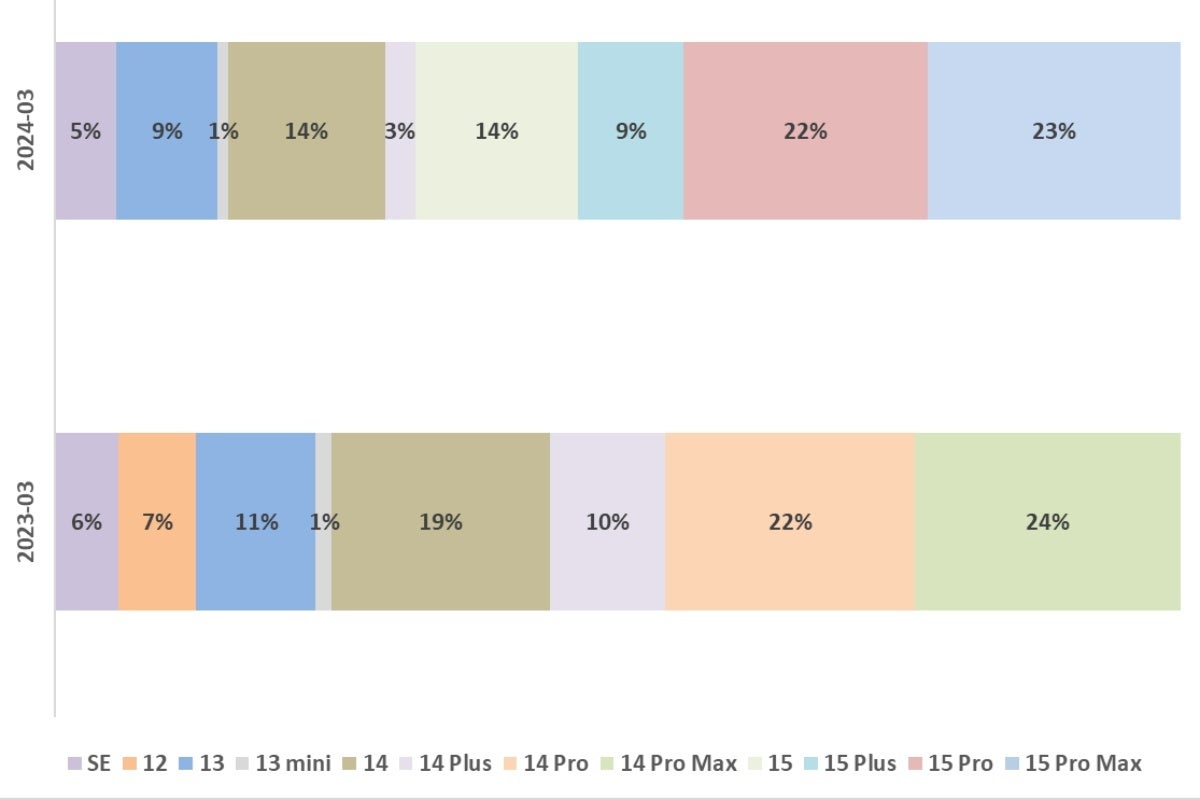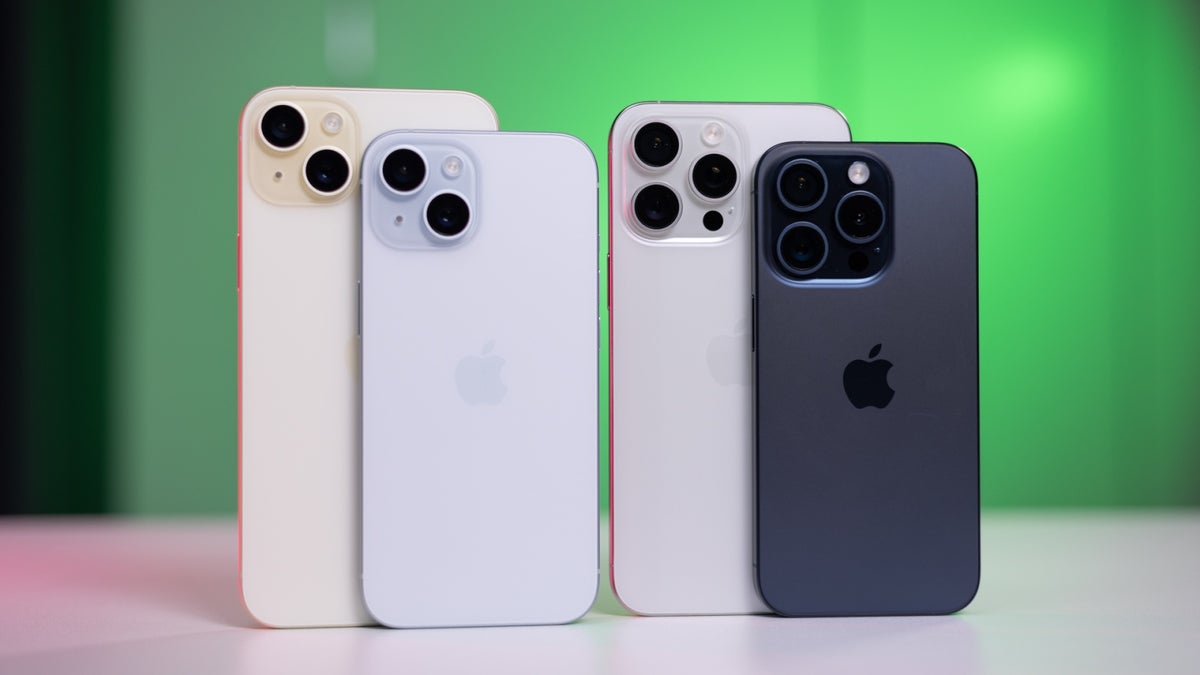Released in September 2023, the
iPhone 15, 15 Plus, 15 Pro, and 15 Pro Max reportedly got off to a very strong start at the global box-office, crucially contributing to
Apple’s first-ever full-year supremacy in the mobile industry.
But after a few weeks of rampant demand around the world, the
iPhone 15 quartet quickly and unexpectedly began to lose steam, a situation that extended to the early stages of 2024, when
Samsung regained the smartphone market crown.
Of course, if there’s one nation the Cupertino-based tech giant can always rely on to offset its sometimes mediocre sales results in countries like China or India, that’s undoubtedly the US. But while Samsung cannot threaten
Apple‘s domestic domination, the
iPhone 15 lineup doesn’t appear to rise to the success of its forerunners stateside either.
The iPhone 14 is just as popular as the iPhone 15
With a 48MP primary rear-facing camera, slightly bigger battery, brighter screen, faster processor, and especially a fancy notch-replacing Dynamic Island, the “base” 6.1-inch
iPhone 15 felt like a pretty radical upgrade over the non-Pro
iPhone 14 to us.
Evidently, that opinion was not shared by as many hardcore Apple fans in the US as expected, given that the iPhone 14 and iPhone 15 accounted for the exact same 14 percent slice of total regional iPhone sales between January and March 2024.
The
iPhone 14 stood at 19 percent in the first quarter of 2023, mind you, compared to just 11 percent for the
iPhone 13. This shift in demand towards older and often cheaper members of the iPhone family is obviously not good news for Apple’s profit margins, although the
15 Pro is proving as successful as the
14 Pro and the 15 Pro Max is not far behind the
14 Pro Max.
Like the largest
iPhone 14 variant at the beginning of last year, the 6.7-inch
iPhone 15 Pro Max super-flagship leads the latest US sales chart, very closely followed by its little Pro brother.
But due to the “vanilla” iPhone 15‘s poor performance, the entire family is doing significantly worse now than the iPhone 14 series this time last year. We’re talking about a very large drop from the 75 percent share of sales accounted by the iPhone 14 family in Q1 2023 to only 68 percent for the iPhone 15 roster during Q1 2024.
What about the iPhone 15 Plus, 14 Plus, iPhone 13, and SE?
The 2021-released
iPhone 13 further highlights Apple’s profitability struggles, retaining a surprisingly large chunk of its US appeal in 2024. After scoring 11 percent of all regional iPhone sales during the first three months of last year, the archaic Apple A15 Bionic-powered model stood at 9 percent in the same timeframe of 2024, which is naturally a very strong result.
That’s made even clearer by the massive decline of the
iPhone 14 Plus from 10 percent in Q1 2023 to only 3 percent now. Meanwhile, the
iPhone 15 Plus managed to become almost as popular as its direct predecessor, which is however still not enough to match the sales figures of all other
iPhone 15 family members.
Last but not necessarily least, the iPhone SE (3, presumably) is itself capable of a good result after two years on the market, merely dropping 1 percent from its 6 percent share of US iPhone sales between January and March 2023.
Will that make Apple rush the development and release of an
oft-rumored budget-friendly iPhone SE 4? That’s hard to say, as such a device would undoubtedly become extremely successful extremely fast while causing its manufacturers even more profitability issues. But the affordable handset can’t be delayed forever, now, can it?



